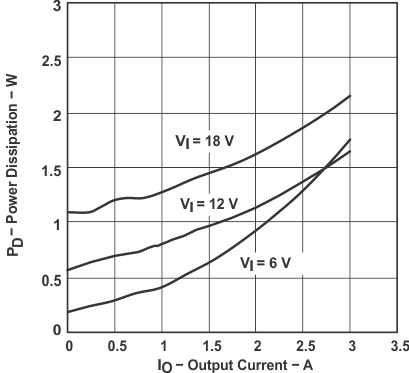SLVU097B October 2003 – October 2021 TPS54350
2.3 Power Dissipation
The low junction-to-case thermal resistance of the PWP package, along with a good board layout, allows the TPS54350EVM−235 EVMs to output full-rated load current while maintaining safe junction temperatures. With a 12-V input source and a load approaching the current limit of 4.2 A, the junction temperature is approximately 47°C. The total circuit losses at 25°C are shown in Figure 2-3. Power dissipation is shown for input voltages of 6 V, 12 V, and 18 V. For additional information on the dissipation ratings of the devices, see the individual product data sheets.
 Figure 2-3 Measured Circuit
Losses
Figure 2-3 Measured Circuit
Losses